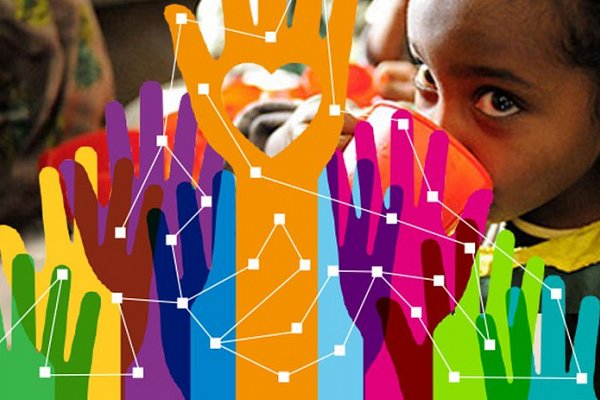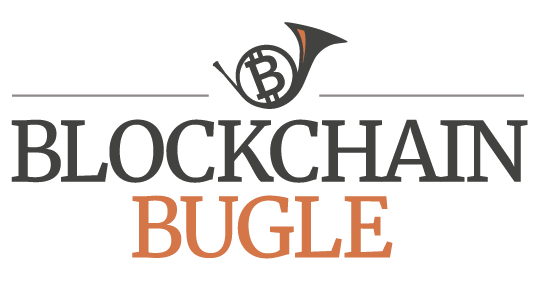Bitcoin and Blockchain Technology: The Future of Philanthropy

Charities supporting children’s causes, victims of humanitarian disasters, the environment, scientific research or the arts raise millions of dollars in donations each year. Yet, while generous contributions continue to be made around the world, public trust and confidence in charities has been reported at its lowest recorded level.
According to a 2016 report from UK Fundraising, a survey of over 1,000 people found that trust in charities has fallen from 6.7 out of 10 in 2014 to 5.7 in 2016. The main reasons for this decline are distrust in how charities spend their donations, a lack of knowledge among the public about where their donations go and media coverage critical of charity practices.
Furthermore, a 2013 Guardian report suggests that people in the U.K. would donate an extra £665 million a year to charity if organizations provided additional information about the things they care about, such as evidence of how their donations are impacting a cause and how their money is spent.
So how exactly can this issue be rectified for the benefit of charities and those who want to donate to a worthy cause? Enter bitcoin and blockchain technology.
Alice.si: A Blockchain Philanthropy Platform
According to Raphaël Mazet, CEO of Alice.si, a U.K.-based blockchain philanthropy platform, charities are well documented with trust issues, particularly in the U.K. He believes, though, that blockchain technology is useful in addressing these issues.
“[As] donations can be made conditional to impact, and because everything is recorded immutably and transparently, anyone can verify what charities have achieved,” he said, speaking to Bitcoin Magazine.
Alice.si is built on Ethereum’s blockchain; its name is an homage to “Alice,” who anecdotally always seems to be sending money to Bob. The “.si” stands for “social impact.” Using Alice, charities can raise donations based on the transparency of their impact. Once a donation appeal has been launched on Alice, the charity commits to delivering specific outcomes and receives payment only when those outcomes are verified and validated by an independent third party.
As part of the Nominet Trust’s Social Tech Seed grant-making program, Alice received just over £45,000 in up-front funding to get the startup off the ground, thus allowing the company to build a track record of trust.
While Mazet states that the use of blockchain technology in charity cases can help to humanize the technology and introduce it to the general public, the company’s main message to donors focuses on how they can track the impact of their donations.
“Because we’re trying to reach a mainstream audience, we won’t necessarily put the tech front and center,” he said.
As such, Alice’s first pilot with St. Mungo’s, a forward-thinking U.K.-based homeless charity, due to be launched in Q1 of 2017, will be measuring its impact and working on a payment-by-results basis.
The platform will not accept donations in digital currencies just yet, however. Mazet explained that Alice is working with Tramonex Labs, which is registered within the sandbox framework of the U.K.’s Financial Conduct Authority, to issue electronic tokens that represent the donations on the Ethereum blockchain.
“That means they’ll collateralize and tokenize donations made in fiat on the Alice website so we can use them in our smart contracts,” he said. “In time, as people become more familiar with the technology, our plan is to empower them to interact with the smart contracts directly, and start donating with cryptocurrencies if they want to.”
Mazet says that Alice will be launching pilots in the first half of 2017 so they can test different use cases with different partners. After that, the idea is to open up to more charities, launching programs outside the U.K., such as in the U.S. and South Africa.
“The end game is really to make sure donors can trust the charities they’re funding, and see if we can help tackle some of the world’s really big issues in a demonstrable way.”
BitGive: Facilitating Bitcoin Donations
Since the establishment of the BitGive Foundation in 2013, the nonprofit organization has been revolutionizing the way in which people donate to charity; in fact, it is the first 501(c)(3) registered nonprofit in the Bitcoin space.
Connie Gallippi, founder of BitGive, said to Bitcoin Magazine that the number of donations largely trends with the price of bitcoin; when the price is up, the organization sees more donations.
“Early on, it was a novel and interesting way to give, so there was more attention on it in the media,” she said.
For BitGive’s projects specifically, it also correlates to the amount of time and effort they have put into a charity or campaign and how much their mission and projects interest potential donors, Gallippi added.
In December, BitGive announced the beta launch of GiveTrack, a blockchain-based multidimensional donation platform that provides the ability to transfer, track and provide a permanent record of financial transactions across the globe from beginning to end.
By leveraging blockchain technology, GiveTrack enables a high level of confidence in donors, who can see exactly where their donation is going and how the funds are being used. By implementing the technology with charities, Gallippi believes it connects people with the technology.
“Offering them an explanation as to how this technology can improve the work of charities, and ultimately drive more impact toward causes they care about, makes the technology more approachable and more relevant to a mainstream audience,” she said.
Despite working with large organizations such as Save the Children, who now accepts bitcoin directly, Gallippi noted that it is BitGive’s role in supporting a new water well built at the Shisango Girls School in Kenya that she is most proud of.
“The well has changed so many young lives and will continue to lift up that community for many years to come.”
Gallippi added, though, that while charities will continue to receive cash donations, she believes that Bitcoin and blockchain technology will eventually become more of the norm for giving. Through a cost-effective approach where less fraud and faster transaction times are guaranteed with donor tracking, she said that these organizations will be at the forefront, leading the way to the future of philanthropy.
Helperbit: A Blockchain Natural Disaster Management Platform
According to the U.N., every year, the total number of people affected by natural disasters reaches approaches 200 million, while 100,000 of those victims die. While the Helperbit website states that 325 million people could be affected by poverty and vulnerable to natural hazards and climate extremes by 2030.
“By 2030, there could be 325 million people trapped in poverty and exposed to the full range of natural hazards and climate extremes.”
Unfortunately, the charity sector has a history of lack of transparency, inefficiency and unfair redistribution of funds, but Helperbit is offering transparency in humanitarian aid through blockchain technology.
In December, Legambiente, a nonprofit organization in Italy, teamed up with Helperbit to adopt Bitcoin and blockchain technology. The funds raised will be donated to the “Rebirth Has a Young Heart campaign,” which is dedicated to youth entrepreneurs, such as young farmers, in the areas affected by the August and October earthquakes in the region.
Guido Baroncini Turricchia, CEO and co-founder of Helperbit, told Bitcoin Magazine that since the company’s collaboration with Legambiente, the Swiss Re Foundation and the Swiss Re Centre for Global Dialogue have also created a multisig wallet in Helperbit and donated more than 5 bitcoins. Add that to the other donations the Legambiente charity campaign has received, and they have 6.22 bitcoins in total.
Even though it’s too early to measure the impact the donations are providing, Turricchia believes that in time they can highlight the advantages of using digital currencies.
“In the long-term, more people will buy bitcoins with the purpose of donating them,” he said. “At the moment we are mainly shaking the social sensibility of people in Italy, but with greater resources we will be able to increase our efforts worldwide.”
Through the Helperbit platform it is possible to analyze the total donations received as well as checking how the funds will be spent. This gives donors the assurance they need that their donations reach their destination, where they can monitor the impact resulting from the economic aid.
Even though Bitcoin and blockchain technology have often been negatively portrayed and debated for years, Turricchia is of the opinion that this initiative is the best way to show that it is only a tool and, as such, can be used positively.
“We are confident that an improvement of the interface for every kind of person merged with the increased social awareness of the worldwide community will bring a widespread adoption because the outcomes will be the best drivers,” he said.
While it’s unlikely to happen straightaway, Turricchia adds that the penetration of the Bitcoin ecosystem in everyday life will also be reflected in the growth of digital currency donations.


